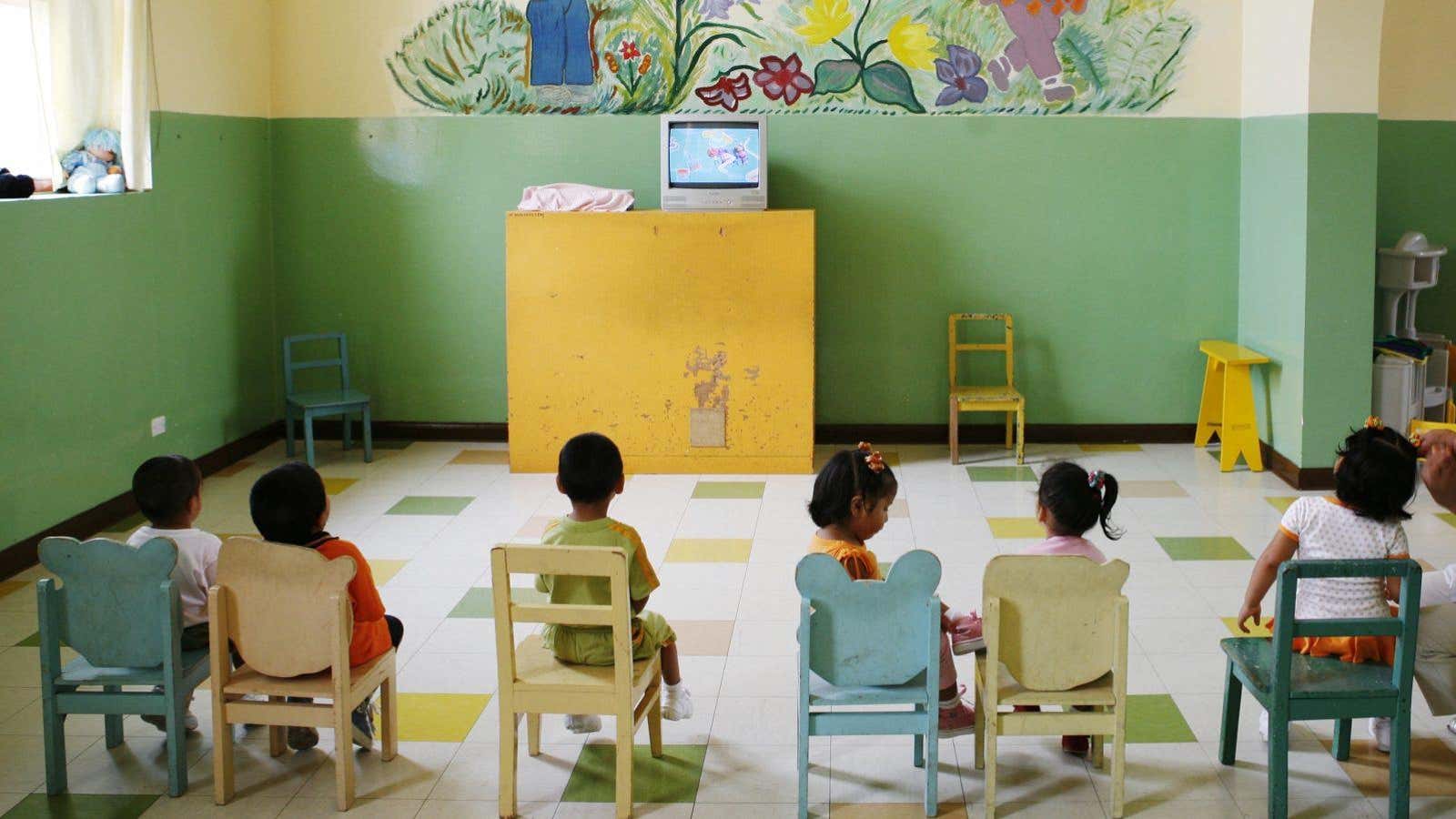A child goes to the doctor, has their finger pricked to draw blood, and reacts with pain. How much pain? There’s no way to quantify someone’s pain other than to try and interpret their responses, and according to recently published research, adults perceive that a child suffers more if they believe that child is a boy rather than a girl.
The study, published in the Journal of Pediatric Psychology earlier this month, asked 264 adults to evaluate how much pain they thought a five-year-old child was experiencing while having blood drawn at the doctor. All adults were shown the same video, which showed a child in gender-neutral clothing who didn’t clearly present as either girl or boy. But half were told to evaluate the pain “Samuel” was experiencing, while the other half were told to assess “Samantha’s” pain, both on a scale from 0 (no pain) to 100 (severe pain.)
On average, the participants rated the boy as experiencing pain of 50.42, compared to a mean of 45.9 if they thought the child was a girl. These findings reinforce the only other study on gender biases in perception of children’s pain, a 2014 paper which also found that adults rated pain as more severe if they thought the child was a boy rather than a girl.
The findings add to existing research showing that female pain is dismissed and undertreated compared to male conditions. This sort of dismissiveness of women’s pain reflects a stereotypical belief that women are hysterical, and therefore if a woman is expressing pain, she must be exaggerating. The new research also suggests that these biases impact how patient-reported pain is perceived in patients as young as five.
Unexpectedly, the recently published study also found that the boys’ pain was rated more severe entirely because of the judgement from female adult participants; male participants, in fact, rated the girls’ pain as fractionally more severe than the boys’. Female participants rated pain at a mean of 53.1 if they thought the child was a boy, compared to a mean of 45.69 if they thought the child was a girl. “We didn’t expect that,” says Brian Earp, co-author of the study and associate director of the Yale-Hastings Program in Ethics and Health Policy at Yale University and The Hastings Center bioethics research institute in New York. Because the 2014 paper was predominantly made up of female participants, it also reflected this female bias. Earp says he’s unsure why women would show more bias than men and was open to hypotheses; I suggested perhaps women are socialized to minimize their own pain and so do the same for other women, whereas Earp pointed to Cornell University philosophy professor Kate Manne’s argument, from her book Down Girl, that women are socialized to take male concerns more seriously. Earp said those explanations were plausible
Earp says he’d like the finding to be replicated and, if it is found to have clinical significance, that healthcare experts develop ways to combat this bias. “Young children may not be able to verbalize in eloquent ways what they’re experiencing,” he says. “We’d better have a clear sense of how our judgements work.”
It’s possible that by age five, children have already been socialized to express pain differently depending on whether they’re a girl or boy. “By the time you’re five, you’ve already been exposed to what the appropriate “gender role” is for you,” he says. “It might mean that boys and girls really are expressing pain differently.” If this is the case, and boys are taught not to express pain, then adults who saw a boy showing pain would be reasonable to infer that the boy is in more pain than a girl, who has not been taught to hide pain, showing the same signs. Earp is planning a follow-up study to assess how adults perceive pain in infants, which, he says, will be the “cleanest” way to know whether any differences in pain assessments come from bias. The results could show that women, who often face a lifetime of prejudice in healthcare, start experiencing such prejudices from birth.
Correction: An earlier version of this article stated participants perceived the child’s pain to be 65.15 if they thought it was a boy, compared to 58.75 if they thought the child was a girl. In fact, these statistics are from earlier research on the subject. The correct statistics are 50.42 if participants thought the child was a boy, compared to a mean of 45.9 if they thought the child was a girl.
